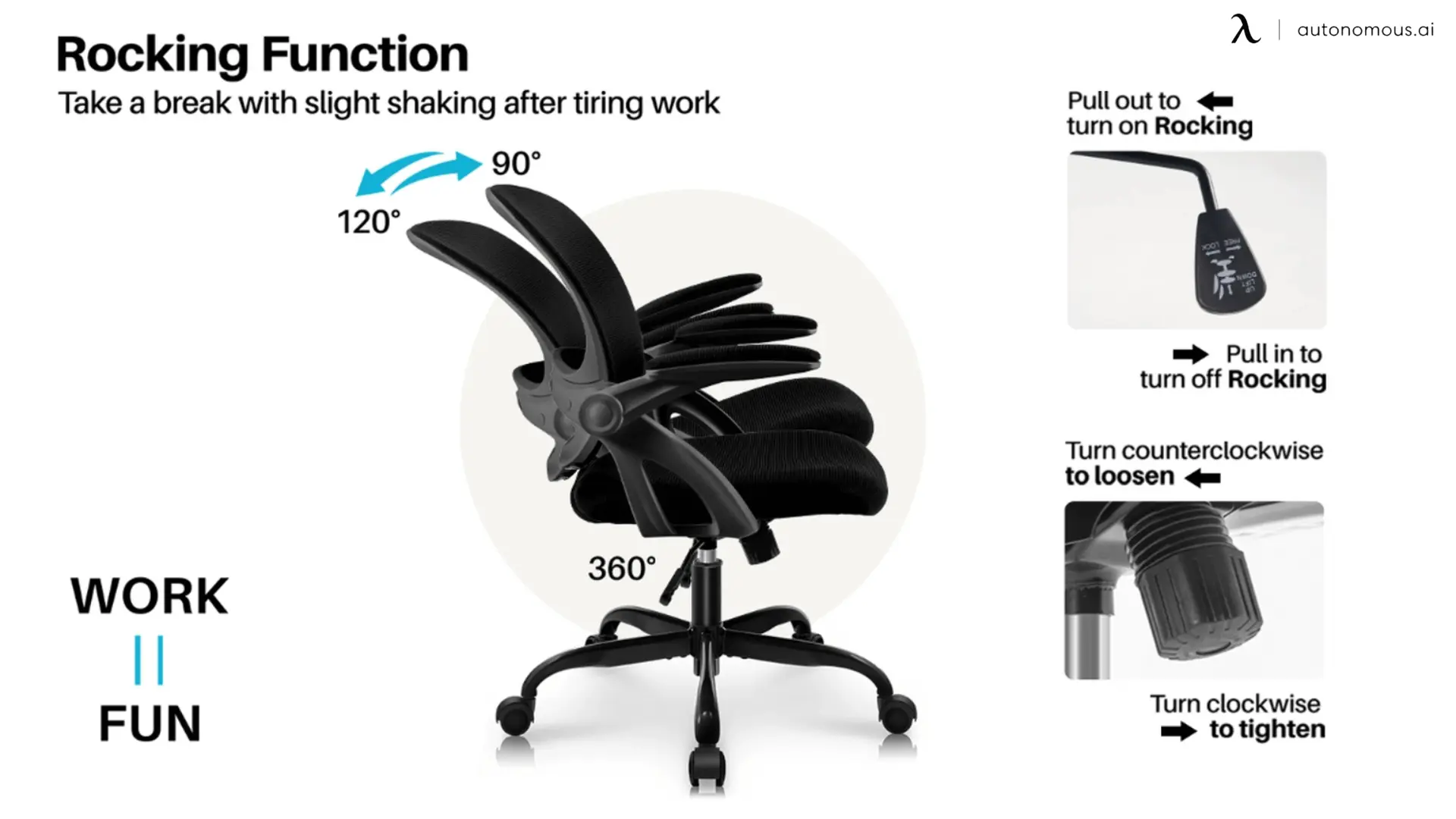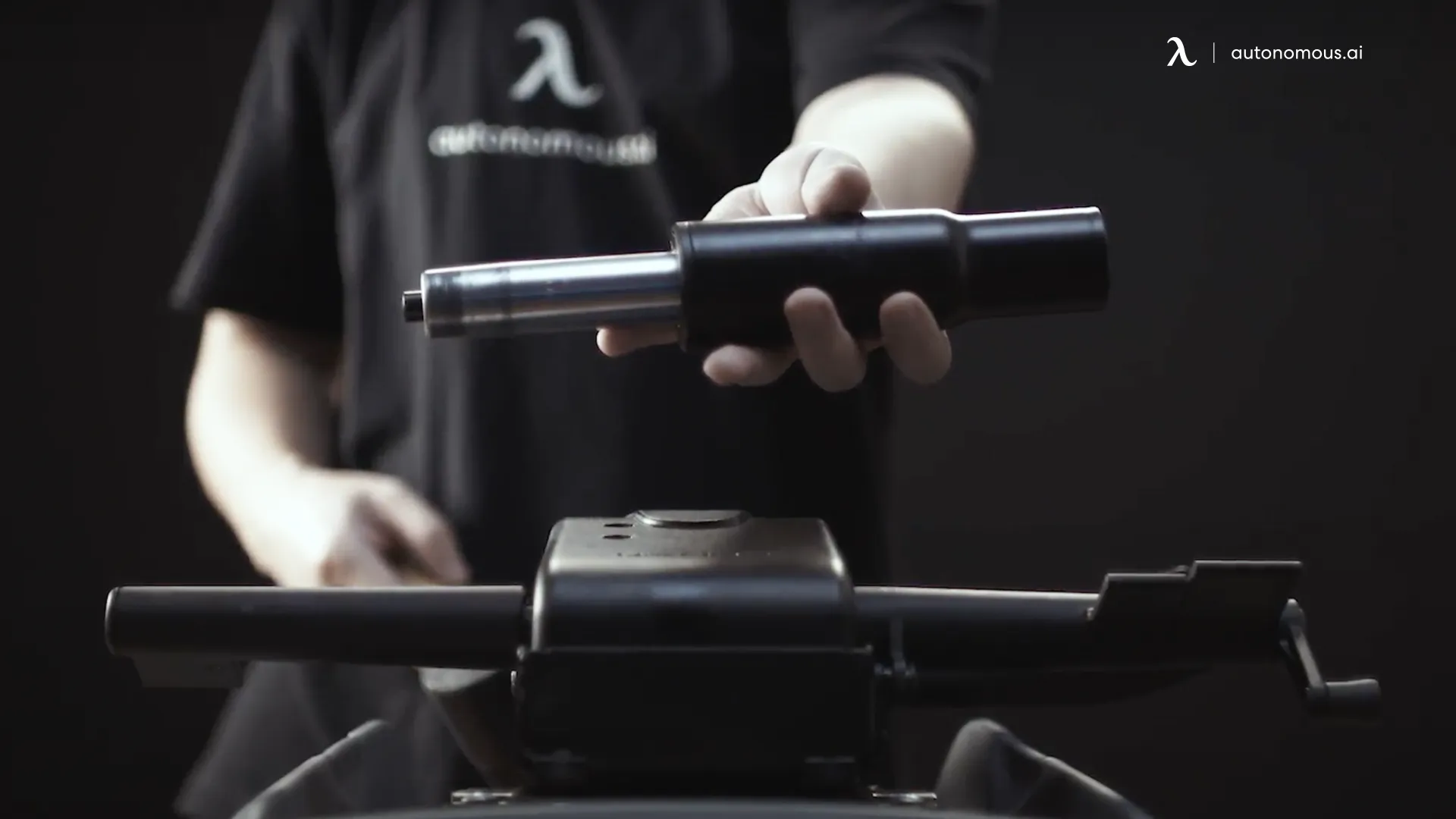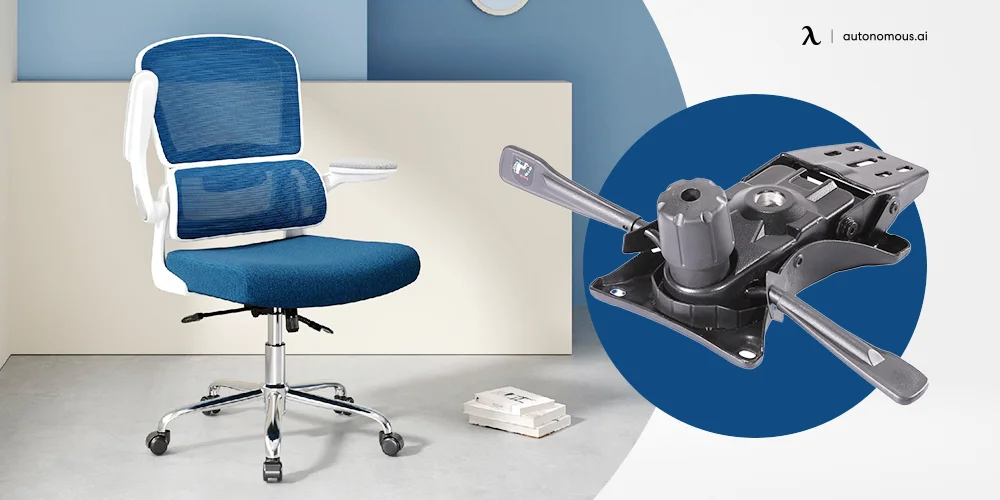
Table of Contents
Each day, many offices and home office employees sit on their chairs for long periods of time. Even the tiniest annoyances might become frustrating and irritating as a result of this. That irritating creak when you lean forward, broken wheels that make getting up from your desk difficult, or even the constant sinking of your seat when you sit down.
You just have to say, "I've had enough!" along with having your office chair repaired.
Fortunately, many of the most frequent office chair problems may be resolved with a little elbow grease, a home tool kit, and some office chair replacement components. Continue reading to learn how to identify and fix an office chair.
How to Do Office Chair Repair
1. Sinking Office Chairs
Faulty or old office chair gas lifts are the most common cause of sinking office chairs. Although high-quality office chair gas lifts prolong the life of the chair, they may eventually need to be repaired or replaced.
Defective seals are the most typical cause of a gas lift causing your office chair to not stay up. Damage from improper use or a malfunctioning sub-par part could be more of the serious causes.
While you may discover some quick sinking office chair repair solutions online, such as utilizing a PVC pipe or a hose clamp, these short-term fixes are likely to cause more problems in the long run.
To fix a sinking office chair, you should purchase a new office chair gas lift and either install it yourself or have it installed by a local office chair retailer.

2. Squeaky Office Chairs
Squeaking from your desk chair could be triggered by a range of factors, so you'd have to figure out what's causing it before getting it fixed.
Your chair mechanism or your chair gas lifts are the most usual components that cause squeaking in your office chair. Purchase some basic oil lubrication and apply it to the problem regions of your office chair to minimize and fix the squeaking. You may also notice creaking in the castors of your office chair, which may be rectified with a little oil.
After applying the oil to the problem regions, move and work your office chair repair to ensure that the oil is evenly distributed throughout the component. Wait a few hours for the problem to be fixed.
/https://storage.googleapis.com/s3-autonomous-upgrade-3/static/upload/images/customer/7-0_1652437936-0_1652782888.jpg)
3. Broken Office Chair Base
Whether the legs of your office chair have cracked or broken, it's time to replace them with a brand new one. Using other methods to repair cracks or broken chair bases, such as adhesive or brackets, might weaken the office chair and, if they fail, inflict severe harm.
If your office chair base is in fine shape but you're having mobility problems, it's most likely due to a damaged or defective office chair castor.
Examine the factors of your office chair repair by turning it over. If you see a build-up of filth, string, wool, or other debris, try to remove it by hand.
Alternatively, if a few of the wheels seem to be beyond office chair repair, you could replace them, or you could connect glides and make it into an office chair without wheels.
4. Wobbly Office Chair
The longer you leave your wobbly office chairs, the more they can cause discomfort and become a hassle. Fortunately, this may be resolved by analyzing the mechanics and seat of your office chair to see what is causing the problem.
Fixing a wobbly office chair may simply entail tightening the chair mechanism to create a firmer seat. Alternatively, you may only need to tighten the bolts connecting the chair mechanism and the seat.
If you're still having trouble, contact your local office chair suppliers, who can inspect, analyze, and fix your broken office chair.

5. Broken Office Chair Arm
Office chair arms that are constructed of hard plastic and have broken or snapped off, may need replacing.
If your adjustable chair arms aren't operating properly, you might be able to fix the problem yourself. Examine the adjustable arm mechanism for any dust or dirt build-up and try to remove it. Then lubricate the mechanism with oil, move your desk chair repair around to coat it, and try the process again.
Furthermore, if this still doesn't allow your adjustable chair arms to function properly, it's time to get some new office chair arms.
/https://storage.googleapis.com/s3-autonomous-upgrade-3/static/upload/images/customer/pink1600-5-5_1677036887.jpg)
6. Damaged Fabric on Office Chair
Have you noticed any rips or damage in the fabric of your office chair? If you’re handy with reupholstery, you might buy some materials from your local manufacturer and try to reupholster leather office chair yourself. Since your office chair is used for long periods, choose textiles that are both high-quality and sturdy to withstand wear and tear.
If DIY isn’t your style, you can hand the job to experts at your local office chair store. They can refurbish the chair using the best genuine leather office chair materials or offer a variety of fabrics and colors for customization.
Once the chair is repaired, it’s critical to maintain it with proper care. For leather, regular cleaning and conditioning are essential, especially for a leather office chair. If you have a mesh chair, follow these tips on how to clean mesh chair to keep it in top condition.
Still debating between mesh and leather? This mesh vs leather office chair guide compares the pros and cons, helping you choose the right material for your needs. Whether it’s mesh or leather, investing in quality care ensures your office chair stays comfortable and visually appealing for years to come.
FAQs
When Should You Buy a New Office Chair?
When your old armchair is no longer as comfy as it once was, that's one of the best signs that it's time for a new one. This is a gradual process that sneaks up on you without your knowledge. You may notice that you aren't as productive as you should be and that you begin to lose focus, especially in the afternoon.
Do Minor Aches and Pains Get Worse as the Day Goes on?
If you’ve always experienced aches and pains in your desk chair repair, chances are you didn't start with a high-quality chair. In any case, it's probably time to assess the situation of your chair and determine whether it's time to part ways with it.
What Does It Look Like and How Does It Feel?
The foam cushioning should be checked if you feel uncomfortable and your work is suffering. Is the seat truly firm and has it lost its springiness? After only a few months of use, cheap chair foams lose their ability to remain bouncy and become rigid and stiff.
Consider how much time you spend sitting on this chair each day. People spend a lot of money on mattresses because they sleep on them for so long; picking the perfect chair is just as crucial because you could spend almost as much time sitting on it.
For instance, a chair that is completely ergonomic for one person may not be suitable for another. You might not like your present chair, but there's no obvious reason to replace it.
Is It an Ill-fitting Task Chair?
It's possible that your chair was never the ideal fit for you. This is particularly true for people who have taken over a previously equipped office space.
Some chairs have armrests that are too wide apart and can't be moved inward far enough to fit your body. Other chairs may have backrests designed for people who are shorter or taller than you.
If you spend a lot of time in your task chair, it can be worth it to upgrade from a chair that isn't tailored to your specific needs. This can be beneficial to your body.
Do You Have a Flattened Seat Cushion?
The padding in your seat cushion may compress and flatten over time. One of the most significant aspects of your chair is the seat cushion, which helps to avoid back and body problems.
When your seat cushion contracts, your body weight is less supported. Your lower back is put under a lot of strain as a result of this. Anyone who has experienced chronic back pain understands that it can affect many aspects of your life in addition to the work you do in your chair.
Replace your chair when your seat cushion loses its ability to do its work to show your behind and back muscles some care.
Conclusion
Repairing your office chair is not only cost-effective but also a great way to extend its lifespan and improve your comfort. Whether you’re dealing with a sinking chair, squeaky noises, a broken base, or damaged fabric, most issues can be resolved with simple tools and a bit of effort. Addressing these problems promptly ensures a more supportive and productive work environment.
However, not all issues can or should be repaired. If your chair causes persistent discomfort, has structural damage, or no longer meets your ergonomic needs, it might be time to invest in a new one. Pay attention to signs like flattened seat cushions, ill-fitting adjustments, or aches and pains that worsen during the day.
By maintaining or upgrading your chair, you can work comfortably and avoid the physical strain that comes from inadequate seating. Your comfort and health are worth the effort!
Stay connected with us!
Subscribe to our weekly updates to stay in the loop about our latest innovations and community news!
Interested in a Link Placement?
.svg)



/https://storage.googleapis.com/s3-autonomous-upgrade-3/production/ecm/230914/bulk-order-sep-2023-720x1200-CTA-min.jpg)

/https://storage.googleapis.com/s3-autonomous-upgrade-3/production/ecm/230824/Mark-074a7a11-ff01-44fd-a204-55d192ab5798.jpg)